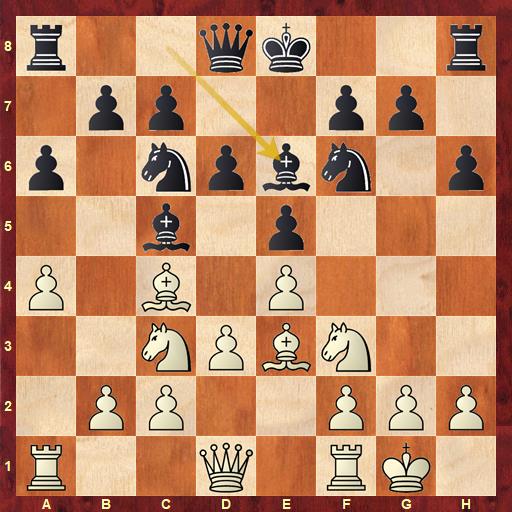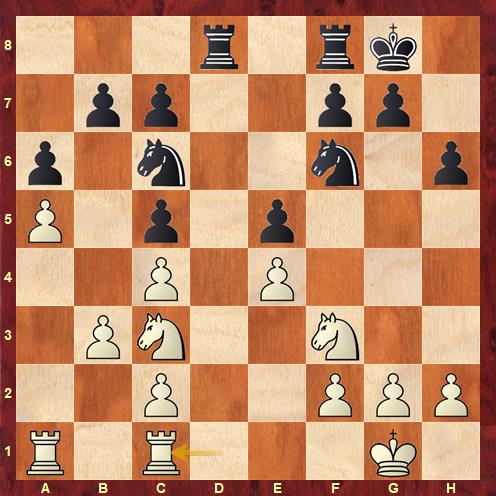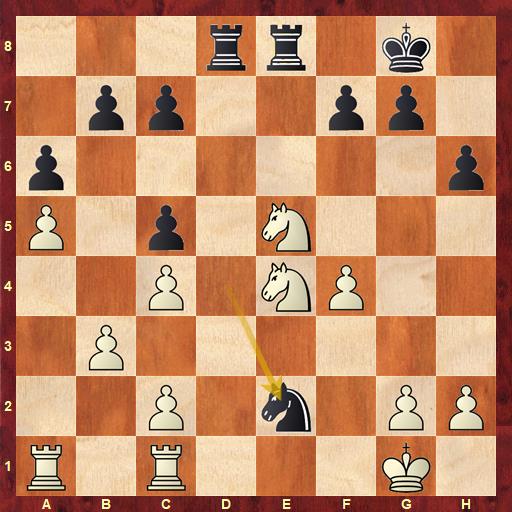World Championship 2024 diaries Game 2
Three games are already over at FIDE World Championship Match 2024. The second game was a rather uneventful one. GM Sundararajan Kidambi did not find the game to be a boring draw. He analyzes the game in detail. He followed the commentary of Peter Svidler, also analysis of Magnus Carlsen and Vladimir Kramnik. Check out the detailed dissection by Kidambi of the second game and enrich your understanding of it. If you like his explanations, do mention it in the comments, so that it inspires Kidambi to share more from his fountain of knowledge. Photo: Shahid Ahmed
Not a boring draw
After having won the first game unexpectedly so to speak with the black pieces, Ding's situation was sort of unique for him as he never got the lead in last year's event until he actually won the World Championship!


So, was he going to try and increase his lead, or play safe keeping slight chances? Gukesh needs to play stable and not go all out in this game. As Magnus quipped, he could not win the match in this game, but he could almost lose it if he lost the current game! Although here too the World Championship in 1972 between Fischer and Spassky and the one in 1954 between Botvinnik and Smyslov show that things are not too simple even with a 2-0 lead! But again, one has to mention that they were 24 game events.
1.e4!?
Once again Ding's very first move comes as a surprise. He is more of a queen-pawn player, and one would expect he would use his favourite openings to put pressure to broaden his lead. But clearly, he has other ideas and maybe wants to surprise Gukesh in almost every game.
1...e5 2.Nf3 Nc6 3.Bc4 Bc5 4.d3 Nf6 5.Nc3 a6!?
To create a luft for the bishop before playing d6
6.a4 d6 7.0-0 h6!?
Played by Gukesh after five minutes of thought, clearly still part of preparation. Kramnik felt that castling was a very acceptable alternative here. But Gukesh for the moment wanted to keep flexibility. Also, the flexible approach served him well in the candidates.
8.Be3 Be6!?
Ding - Gukesh, Game 2

A very interesting decision. Black is completely okay to accept two sets of doubled pawns, and one of the sets being isolated too! Looking up, I found that this was a modern variation, where Black allows this pawn structure and hopes for a dynamic balance. This was also a reason as Kramnik speculated as to why Black had not committed to castling short yet, he retains more dynamism with an option of castling long if required.
9.a5!? N
Ding was blitzing out his moves, and he shows confidence to go to the same pawn structure having two sets of doubled pawns, if Black wants to go for those type of positions.
9...Bxc4 10. dxc4 0-0!?
Once again Gukesh wants to maintain solidity rather than an imbalance in pawn structure. Here there were various options available for Black, to begin with Black seems to win a pawn with
10...Bb4 11.Nd5!

and here Black has the choice of taking the centre pawn or the flank a-pawn. Both seem to give White an initiative at a cursory look. For example,
a) 11...Bxa5 12.Nh4! Nxd5 13.cxd5 Nd4 14.Qg4!
b) 11...Nxe4 12.Qd3! Nc5 13.Qf5 Ne6 14.Qg4!
In a novel way the queen has reached g4 and retains chances of an attack. Black's Bishop on the Queen's wing seems offside.
It is clear that these lines were checked by Ding in his home preparation, so Gukesh rightly speaking avoids it at the first attempt.
However, he still had the option of forcing two sets of doubled pawns for White with 11...Bxe3!?
I am wondering if the choice for not going for these imbalanced positions was influenced by yesterday's result. And, whether Ding is also inviting Gukesh to go for complications when having a deficit in the score. Or it could well be that both players consider such positions to be easier to play for White, we will not know for sure now!
11.Bxc5 dxc5 12.b3
Kramnik suggested refraining from this move and playing 12.Qxd8 Rfd8 and 13.Rfc1 hoping to not define the position of the b-pawn which might be a weakness on a later day when opponent's knigh lands on d4. A very subtle nuance, though even by avoiding it, one is not too sure how serious the chances are to play for a win. Players like Magnus, Karpov, Smyslov would sure relish the opportunity to play these positions.
12...Qxd1
Once again Kramnik had the interesting suggestion of 12...Qd6 in order to transform the doubled pawns into a backward single pawn on d6 but easing the defense of the c5-pawn. But clearly Gukesh was not for this kind of strategy.
13.Rfd1 Rad8 14.Rdc1

A very interesting moment, while watching this decision it seemed to me that this was well thought out, White shows that Black has no entry on the d-file so he can give up that open line, and by keeping both rooks on the board, hope to show that the Black pawn on c5 is a weakness in the long run. I was surprised to hear Ding say that he was not sure about this move and perhaps already lost his advantage in the position which they had prepared! Once again it seems to be too honest and a straightforward opinion. Does it mean that Ding and Richie have prepared some setups and philosophically discussed the ideas as to the position to be aimed for, not always discussing concrete moves? Or did he mean he had forgotten the line. I find the Chinese speaking English to be very pleasant and especially so if Ding speaks with his smiling countenance. But he can also convey some other idea than what he intended to for the simple fact that English is not so much in vogue in the place of his growth. Anyway, more games will show us and from my side these are interesting speculations which are curiosities that every chess fan has and would like to uncover slowly.
14...Nd4!
played after 27 minutes of thought, and Gukesh has a solid central strategy for this game. As Lev Psakhis used to say (albeit for players at a lower level), "If you are not sure of what to do, do centralise - this is mostly right!" Ding felt that he was even slightly worse because of Black's strong central knight on d4. This is a surprising perception when most of the commentators felt that if at all anyone it is only White who can be having the more pleasant position.
15.Ne1!?
A logical retreat. 15.Nxe5 Nxe4! 16.Nxe4 Rfe8 17.f4 Ne2+

and Black goes 18...Nxf4 to equalize. 18...Nxc1 intending to answer 19.Rxc1 with 19...f6 winning an exchange would run into 19.Nc3! trapping the Black's steed on c1 and leading to a won position for White. This is just a sample of how in simple positions the art of maintaining the equilibrium is nevertheless not so simple or rather deceptive after all!
15...Rd6
Sadler was mentioning some ideas based on kingside expansion with 15...g5 where the weakness of the f5-square is not relevant as White is not in a position to use it. He felt Black had a fully acceptable position here.
16.Kf1 g6 17.Rd1 Rfd8 18.f3 Kg7 19.Kf2 h5
Black has been making all the logical moves and shows his intention to slightly expand on the kingside. Here Ding decided to go for a move repetition and decided to steer the game abruptly towards a draw with
20.Ne2 Nc6 21. Nc3 Nd4 22. Ne2 Nc6 23. Nc3 Nd4

Both Magnus and Kramnik felt that White could push around for some more time by stopping Black's expansion ideas with an equally natural move 20.h4! While it is very clear that advantage is not great, but their point was it was not absolutely equal either, White's position is more pleasant, and White had every right to make Black find a few more accurate moves or show mental poise before agreeing for a draw.
This did not happen, and the game resulted in an easy draw, if I can say that. From Gukesh's point of view this would suit his strategy well. He had lost with the White pieces yesterday and managed to show a confident performance today in neutralizing Ding's White. From Ding's point of view, he has a lead, and he hopes to keep it solid and wait for Gukesh to take chances in his White games. As Magnus pointed out Ding has good preparation but is content to draw the pleasant positions he gets. This situation perhaps is apt for him to do so!
This less tense game had its set of subtleties behind the scenes and would serve as a calm before the storm to unfold tomorrow? Or so let us hope!

About the author

ChessBase India is happy to see GM Sundararajan Kidambi writing his second game review of World Championship Match 2024 in his blog "Musings on Chess". Knowing what an encyclopedic knowledge the grandmaster from Chennai possesses, I think we are in for a treat! He is likely to write more about the ongoing World Championship Match. We will keep reminding him about it! We are awaiting to read his next post of the year and be enriched.
Links
The article was edited by Shahid Ahmed





































